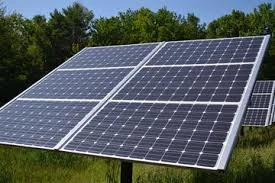Comparing Different Sizes of Solar Panels for Optimal Energy Efficiency
Solar Panel Size Comparison Choosing the Right Panel for Your Needs
As the demand for renewable energy continues to rise, solar panels have emerged as a popular choice for homeowners and businesses alike. However, with a variety of solar panel sizes available on the market, it can be challenging to determine which size is the best fit for your energy needs and installation space. In this article, we will explore the differences among various solar panel sizes, their efficiency, and how to select the right one for your requirements.
Understanding Solar Panel Sizes
Solar panels come in different sizes, typically ranging from 60-cell to 72-cell panels. The 60-cell panels are most commonly used in residential settings due to their compact dimensions, making them easier to install. These panels generally measure about 65 inches by 39 inches and produce an average output of around 250 to 350 watts. On the other hand, 72-cell panels are larger, measuring approximately 77 inches by 39 inches, and are usually used in commercial installations where more power is required. They typically generate between 350 to 450 watts.
Efficiency and Space Considerations
The efficiency of a solar panel refers to the amount of sunlight it can convert into usable electricity. Higher efficiency panels can produce more power in the same amount of space compared to lower efficiency options. If you have limited roof space but still want to maximize energy output, consider investing in high-efficiency panels, which range from 20% to over 22% efficiency. These panels are generally more expensive but can be worth the investment if space is at a premium.
solar panel size comparison

In contrast, if you have ample roof space, you might opt for larger or lower-efficiency panels. While they may occupy more area, their lower price point can make them an attractive option, especially for large installations. It’s essential to weigh the costs against the benefits based on your specific energy needs.
Energy Demand and System Design
To determine the ideal solar panel size, first assess your energy requirements. Look at your average energy consumption over a year, which is usually measured in kilowatt-hours (kWh). This information can help guide the number of panels required for your system.
For instance, if your monthly energy usage is around 600 kWh, and you live in an area that receives about 5 hours of sunlight per day, you can use these figures to estimate how many panels you’ll need. With a typical 300-watt panel, you might require around 6 to 8 panels to meet your energy goals.
Conclusion
Choosing the right size of solar panel is crucial for maximizing energy efficiency and making the most of your investment. By understanding the differences in panel sizes, efficiency ratings, and how they fit into your energy needs, you can make a more informed decision. Whether you opt for high-efficiency panels in a limited space or larger panels in an expansive area, the key is to align your solar solution with both your energy requirements and the physical constraints of your installation site. With the right approach, solar energy can become a reliable and sustainable source of electricity for years to come.
-
Unlocking Energy Freedom with the Off Grid Solar InverterNewsJun.06,2025
-
Unlock More Solar Power with a High-Efficiency Bifacial Solar PanelNewsJun.06,2025
-
Power Your Future with High-Efficiency Monocrystalline Solar PanelsNewsJun.06,2025
-
Next-Gen Solar Power Starts with Micro Solar InvertersNewsJun.06,2025
-
Harnessing Peak Efficiency with the On Grid Solar InverterNewsJun.06,2025
-
Discover Unmatched Efficiency with the Latest String Solar InverterNewsJun.06,2025







